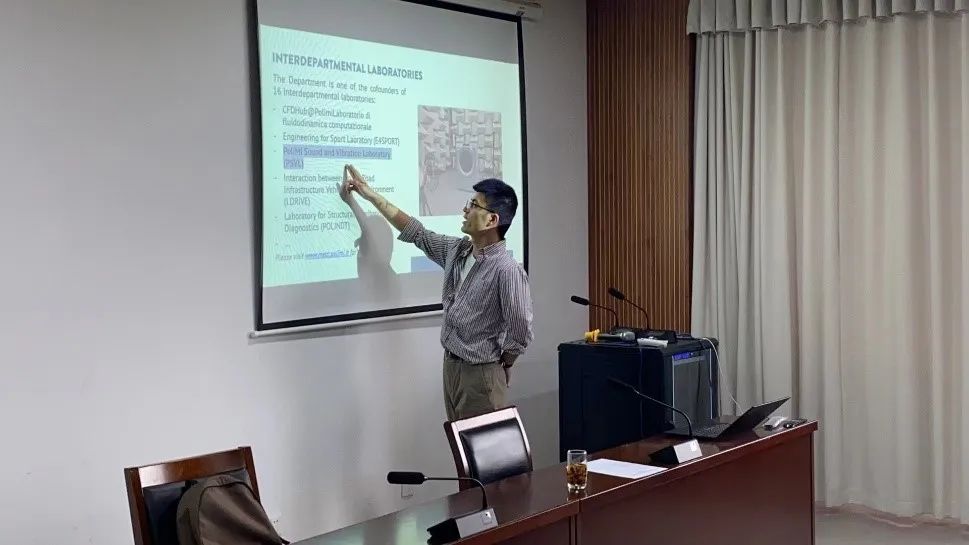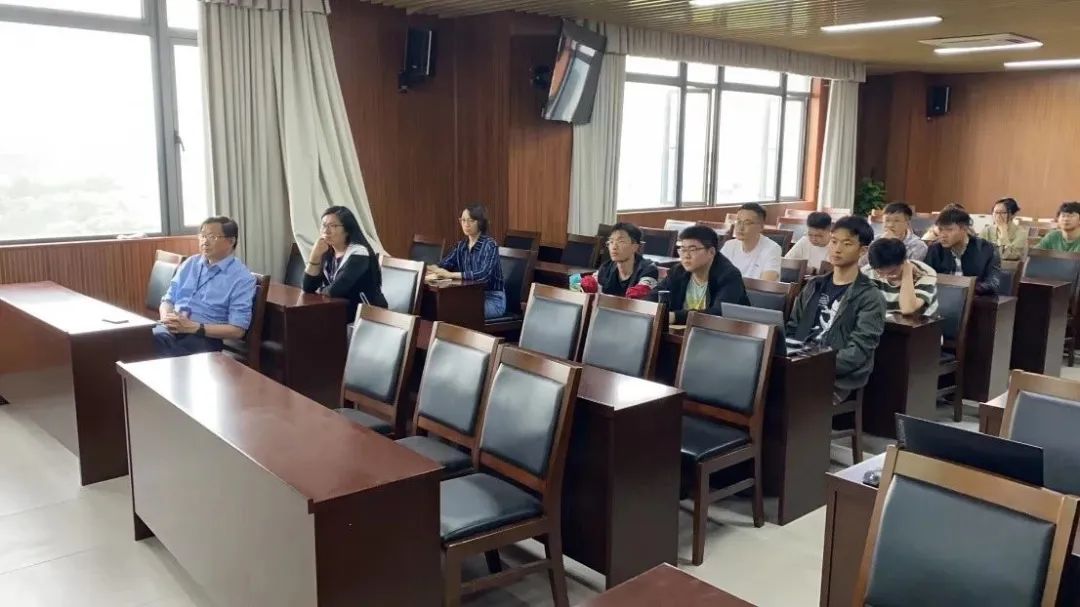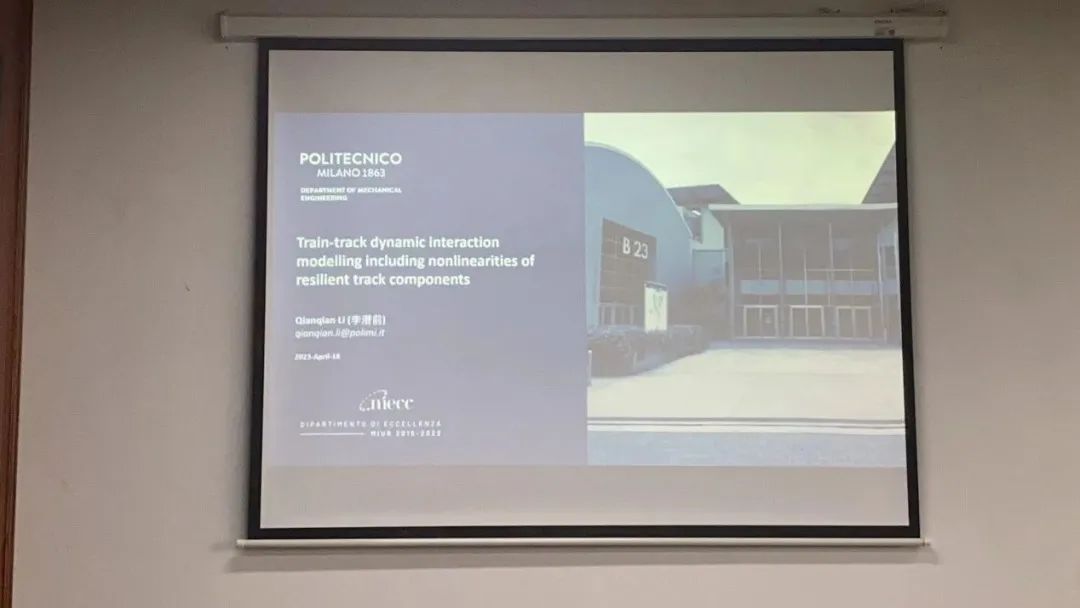On the afternoon of April 18th, School of Urban Railway Transportation invited Dr. Li Qianqian from the School of Mechanical Engineering of Politecnico di Milano to give a lecture for teachers and students entitled Train-track dynamic interaction modelling including nonlinearities of resilience. track components academic lecture. The lecture is hosted by Professor Sheng Xiaozhen.
The speaker of this lecture, Dr. Li Qianqian, graduated with a bachelor's degree from Tongji University, a master's degree from Politecnico di Milano and Politecnico di Turin in Italy, and a doctoral degree from Politecnico di Milano in Italy. He is currently a postdoctoral fellow at the Politecnico di Milano Institute of Mechanical Engineering in Italy. Dr. Li has long been engaged in research on mechanical system dynamics, vibration, and noise. The focus of research is on the comfort of railway passengers, switches and intersections, as well as the nonlinear theory of tram tracks.



At the meeting, Dr. Li shared his research work during his doctoral and post-doctoral years. First, Dr. Li explained that most existing models of train-track interaction do not take into account the nonlinearity of elastic track components. In order to fill the gap in this area, Dr. Li carried out a related study of the nonlinearity of rail components. The model proposed by Dr. Li is based on an embedded orbital system (ERS) to investigate its vertical frequency and related dynamic characteristics under load. The nonlinear dynamic rheological model can reproduce and predict the dynamic behavior of the object. By simulating train-track dynamic interaction, the influence of nonlinearity on track response is studied. It is concluded that the track vibration caused by nonlinearity is significantly different in the range of 50-70Hz and 160-200Hz. Dr. Li Qianqian's rich knowledge and unique ideas to solve scientific problems greatly inspired the teachers and students present.
After the meeting, the teachers and students who participated in the academic lecture actively discussed with Dr. Li Qianqian the theory of train-track interaction, the establishment of nonlinear elastic track component model and the related problems in feature extraction and separation. The atmosphere of the meeting was warm, and the teachers and students present listened carefully to the content of the lecture, which further broadened their academic vision.
